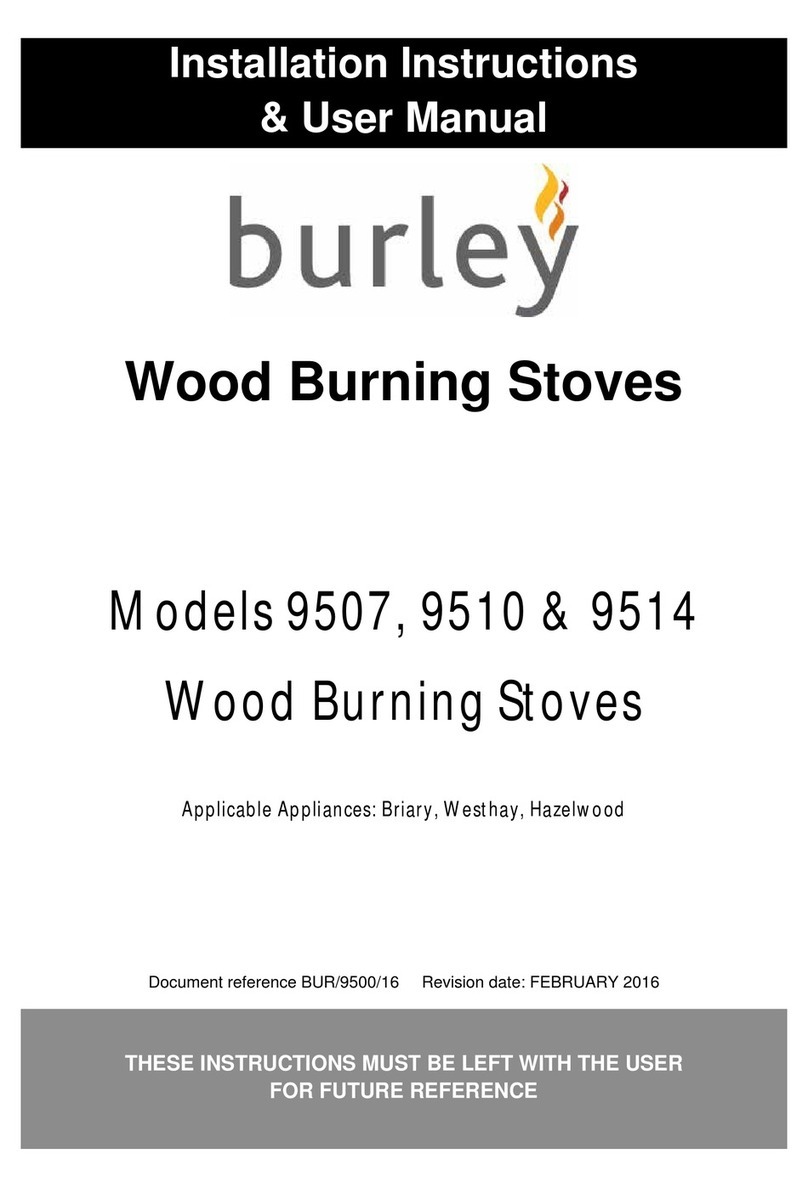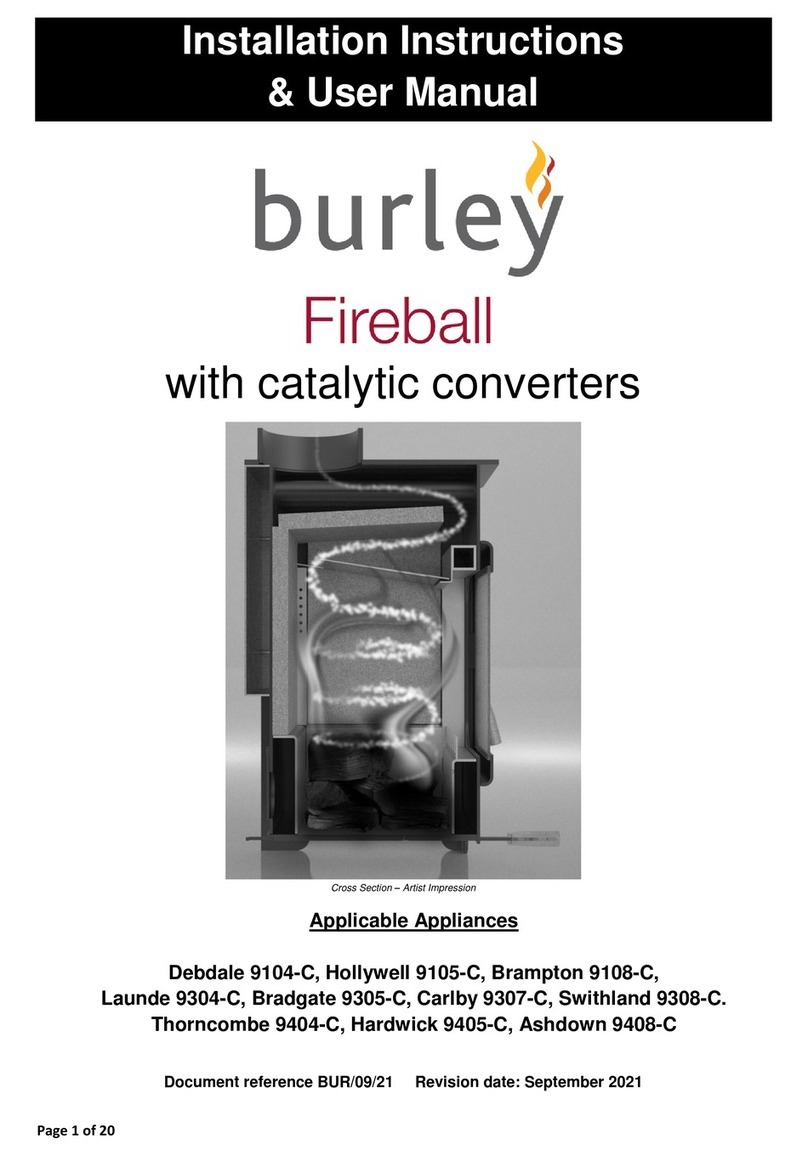Never empty all the ash, leave at least ¾” (20mm) in the bottom.
Ensure the fire is out before trying to remove any ash.
Using the ash scoop provided, scrape back the top layer to one side and scoop out some of the lower ash. Place
this on your compost heap or directly round fruit trees or rose bushes.
Spread the remaining ash back evenly over the base of the stove and you are ready to relight the stove.
Glass
Simple glass cleaner will keep the stove glass fresh most of the time, with a proprietary stove glass cleaner
being needed one a month or so to deep clean any stains.
The stove is double glazed; check the rope seals and screws regularly to ensure a long life.
In the event of a glass breakage, lift the door off and place on a flat surface. Undo the 4 screws holding the
glass fixing brackets and place to one side.
Remove the sheet of glass and clean the un-broken one. Check the door seal and replace if required. The
seal/rope is ready glued, peel back the cover strip and push into place, cut to length using a sharp craft knife.
Glue the second seal on the first pane of glass and place the second sheet over this.
Replace and tighten the screws and brackets. Take care not to over tighten the screws. The glass has to expand
and contract with each lighting.
Chimney sweeping & Maintenance
Your chimney should be swept at least once a year by a registered sweep, twice a year with heavy use. The sweep should
also replace the fire cement at the base of the flue if necessary.
The baffles should be removed in the reverse order described above.
The chimney can be swept through the stove.
The baffle should be cleaned at least twice a year with heavy use, checked, renewed as required and replaced.
Under no circumstances should the stove be used with any baffle missing.
All rope and glass seals should be checked annually and replaced as necessary.
If the stove has not been used for a prolonged period, in excess of 6 months, the chimney should be swept prior to use to
check for blockages and rubble and debris blocking the flue ways.
NOTE; All solid fuel appliances produce considerably more Carbon Monoxide in normal use than oil or gas
appliances. But the general ‘smell’ of the smoke or exhaust is much stronger (with perhaps the exception of
smokeless fuel) and more easily detected by a healthy person. Always use your appliance with the doors shut
and look for tell tale signs of excessive leakage. Smoke stains above the fireplace, smoke emitting around the
door when running, strong smell of soot upstairs etc etc. There is no such thing as a gas tight chimney, but
there has to be a negative pressure inside a chimney for it to draw oxygen through the fire box. Check the seals
at the joints annually and re-fire cement as required, check especially the joint of the flue pipe to the chimney
register plate, hairline cracks are OK, but lumps of cement missing are a bad joint. A proper proprietary joint
should be used here, as they are far superior to cement and rope seals.
Never block air vents internally and externally





























